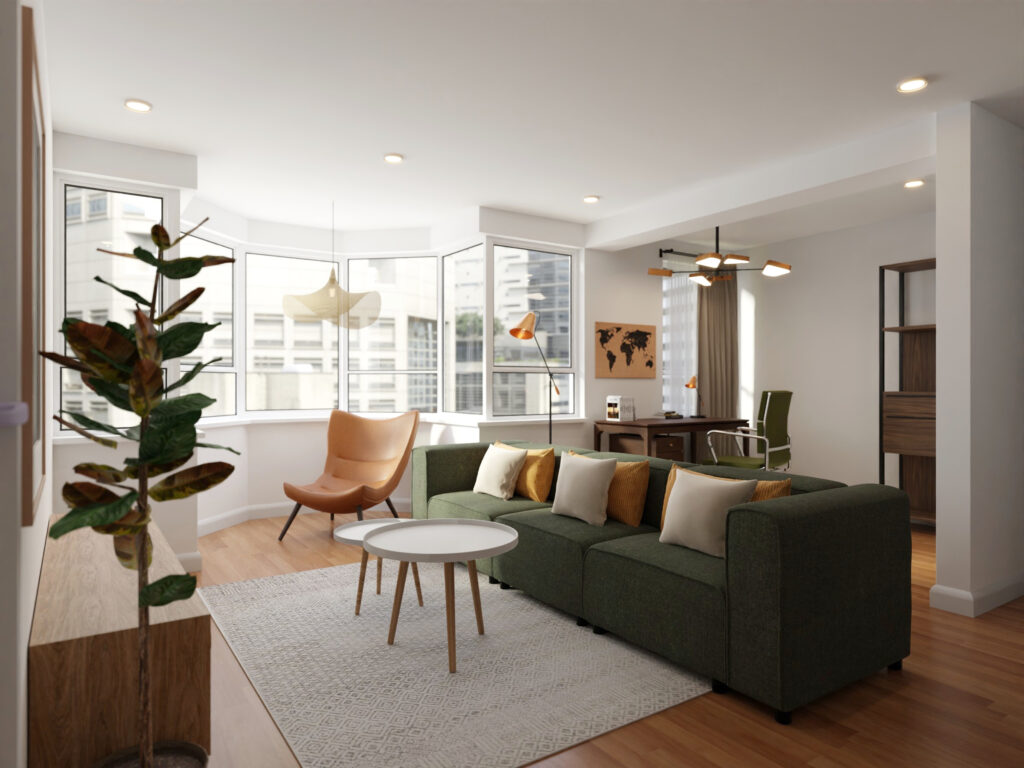The field of interior design is increasingly embracing sustainability. As interior designers, we hold the responsibility not only to create aesthetically pleasing spaces but also to ensure that these environments are sustainable and have minimal impact on our planet.
This article delves into the essential practices of sustainable interior design, offering insights and strategies that can help professionals and homeowners alike make more eco-conscious choices.
The Importance of Sustainable Interior Design:
Sustainability in interior design goes beyond mere trendiness. It involves making informed decisions that reduce environmental impact, promote energy efficiency, and create healthier living spaces.
By integrating sustainability into our interior design processes, we can significantly contribute to environmental preservation while also catering to the evolving preferences of clients who prioritise green living.
1. Choosing Eco-Friendly Materials:
One of the pillars of sustainable interior design is the selection of materials. Opt for natural, renewable, and non-toxic materials to ensure both environmental friendliness and indoor air quality. Bamboo, cork, and reclaimed wood are excellent choices due to their sustainable harvesting practices and minimal processing requirements. Additionally, using recycled materials such as glass and metals can help reduce the depletion of resources.
2. Energy Efficiency through Design:
Energy efficiency is another crucial aspect of eco-friendly interior design. Maximise the use of natural light by strategically placing windows and selecting translucent window treatments that allow light to penetrate while maintaining privacy. Incorporate LED lighting fixtures that are both energy-efficient and durable. Smart home technologies such as thermostats and automated lighting systems can also significantly reduce energy consumption in homes and offices.
3. Water Conservation Techniques:
Incorporating water-saving fixtures in kitchens and bathrooms is an effective way to enhance the sustainability of a space. Low-flow faucets, showers, and dual-flush toilets can dramatically decrease water usage without compromising functionality.
4. Sustainable Furnishing and Decor:
When it comes to furnishing and decor, opting for items made with eco-friendly materials is key. Seek out furniture produced from certified sustainable wood or recycled materials. Additionally, consider the longevity of the furniture; choosing well-made pieces that will last longer can reduce waste and consumption. Vintage or second-hand furniture not only adds unique character to a space but also promotes a recycling culture.
5. Indoor Air Quality and Natural Elements:
Improving indoor air quality is essential for creating a healthy and sustainable living environment. Use paints, adhesives, and finishes that are low in volatile organic compounds (VOCs). Introducing plants into interior spaces not only enhances aesthetics but also improves air quality, as plants are known to absorb pollutants and emit oxygen.
6. Implementing Biophilic Design:
Biophilic design, which involves bringing elements of the natural environment into interior spaces, can enhance both sustainability and wellbeing. This can be achieved through the use of natural light, plant life, natural textures, and materials that mimic the outdoors.
Sustainable interior design is not just a fleeting trend but a necessary shift in the way we think about and create our living and working spaces. By adopting these sustainable practices, interior designers can lead the way in environmental stewardship while meeting the needs of their clients. Whether you are a professional in the field or a homeowner looking to refresh your space, these strategies provide a roadmap for making choices that are both beautiful and beneficial for the planet.
As we continue to face global environmental challenges, the importance of sustainable practices in every field, including interior design, becomes more apparent. It’s time to think critically about the materials we use, the products we buy, and the way we design our spaces. Let’s commit to sustainable interior design practices that help us live better today and secure a healthier world for future generations.




